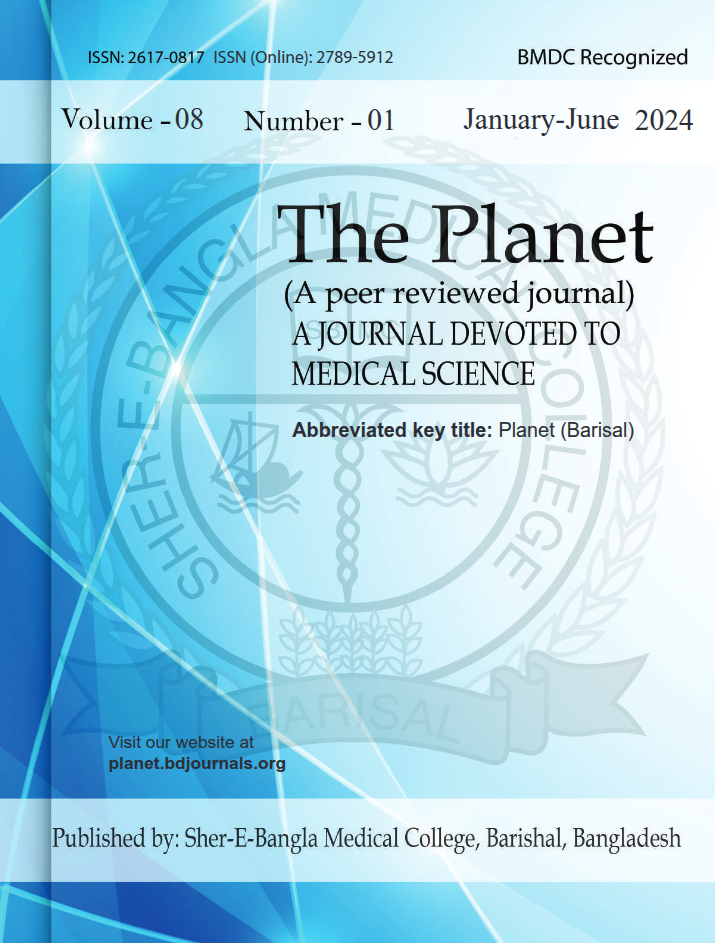Assessment of Bony Changes of Condyle in Patient with Temporomandibular Joint Disorder Diagnosed in a Tertiary Care Hospital
Publiée 2025-04-30
Mots-clés
- Bony Changes,
- Temporomandibular Joint,
- Maxillofacial Surgery,
- CBCT
(c) Copyright The Planet 2024

Ce travail est disponible sous la licence Creative Commons Attribution 4.0 International .
Comment citer
Résumé
Introduction: Temporomandibular joint disorder (TMD) is a common condition characterized by pain, dysfunction, and degenerative changes in the temporomandibular joint (TMJ). These disorders can lead to significant alterations in the structure of the condyle, affecting its function. This study aims to assess the bony changes of the condyle in patients with TMD, diagnosed by CBCT, at the Oral and Maxillofacial Surgery Department of BSMMU. Methods & materials: The study was a descriptive, cross-sectional study conducted at the Department of Oral and Maxillofacial Surgery and the Department of Radiology and Imaging, Bangabandhu Sheikh Mujib Medical University (BSMMU), over 12 months (July 2022 – June 2023). The study population included patients diagnosed with temporomandibular joint disorders (TMDs) who presented at the Department of Oral and Maxillofacial Surgery, BSMMU. A total of 32 patients were selected by consecutive sampling. Result: The results of this study reveal significant bony changes in the condyles of TMD patients, as diagnosed through CBCT. The most common findings included subcortical sclerosis (93.8%), osteophyte formation (93.8%), condylar erosion (87.5%), and condylar flattening (81.3%), indicating chronic joint degeneration. Additionally, subcondylar pseudocysts were observed in 75% of TMD patients, underscoring the severity of the condition. Conclusion: This study underscores the critical role of Cone Beam Computed Tomography (CBCT) in assessing bony changes of the condyle in patients with Temporomandibular Joint Disorder (TMD). The findings highlight the prevalence of significant degenerative changes, such as subcortical sclerosis, osteophyte formation, condylar erosion, and condylar flattening in TMD patients.


